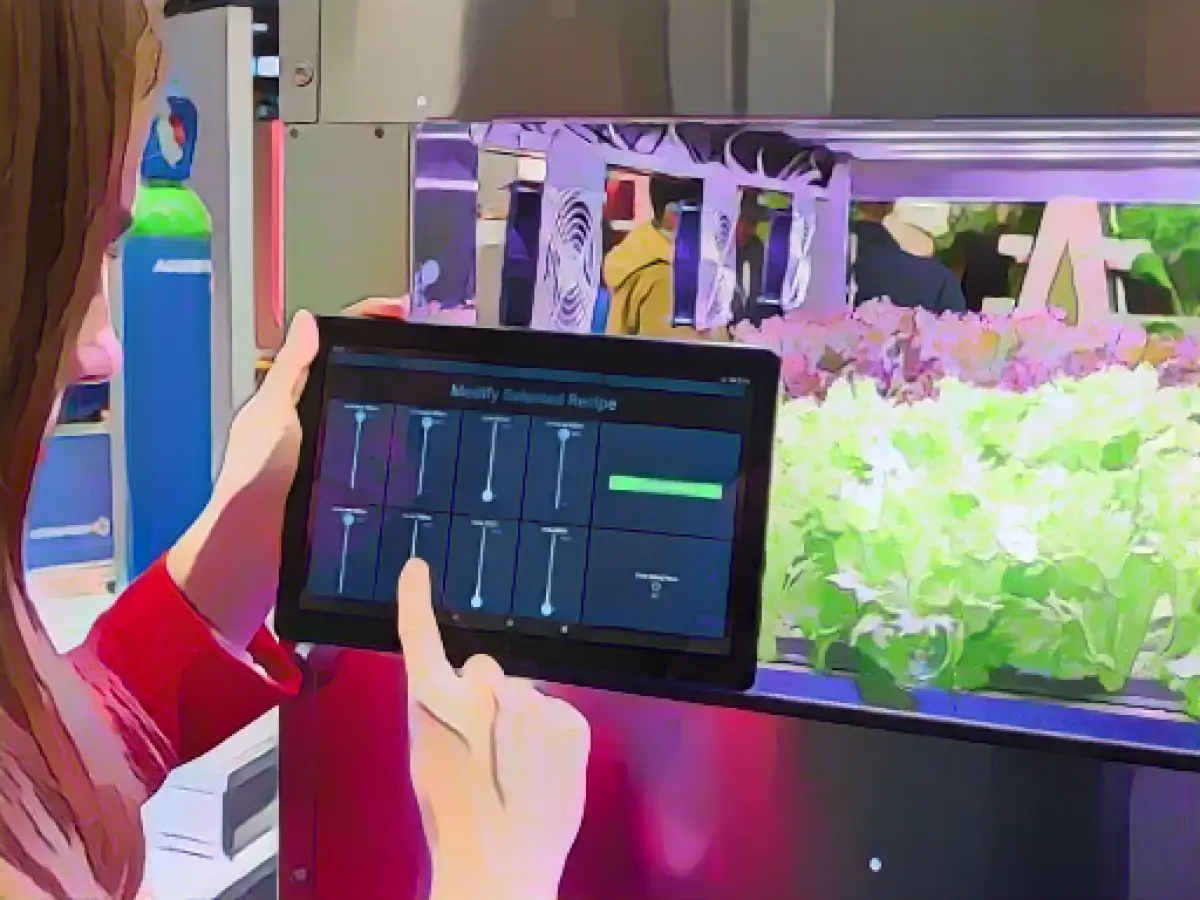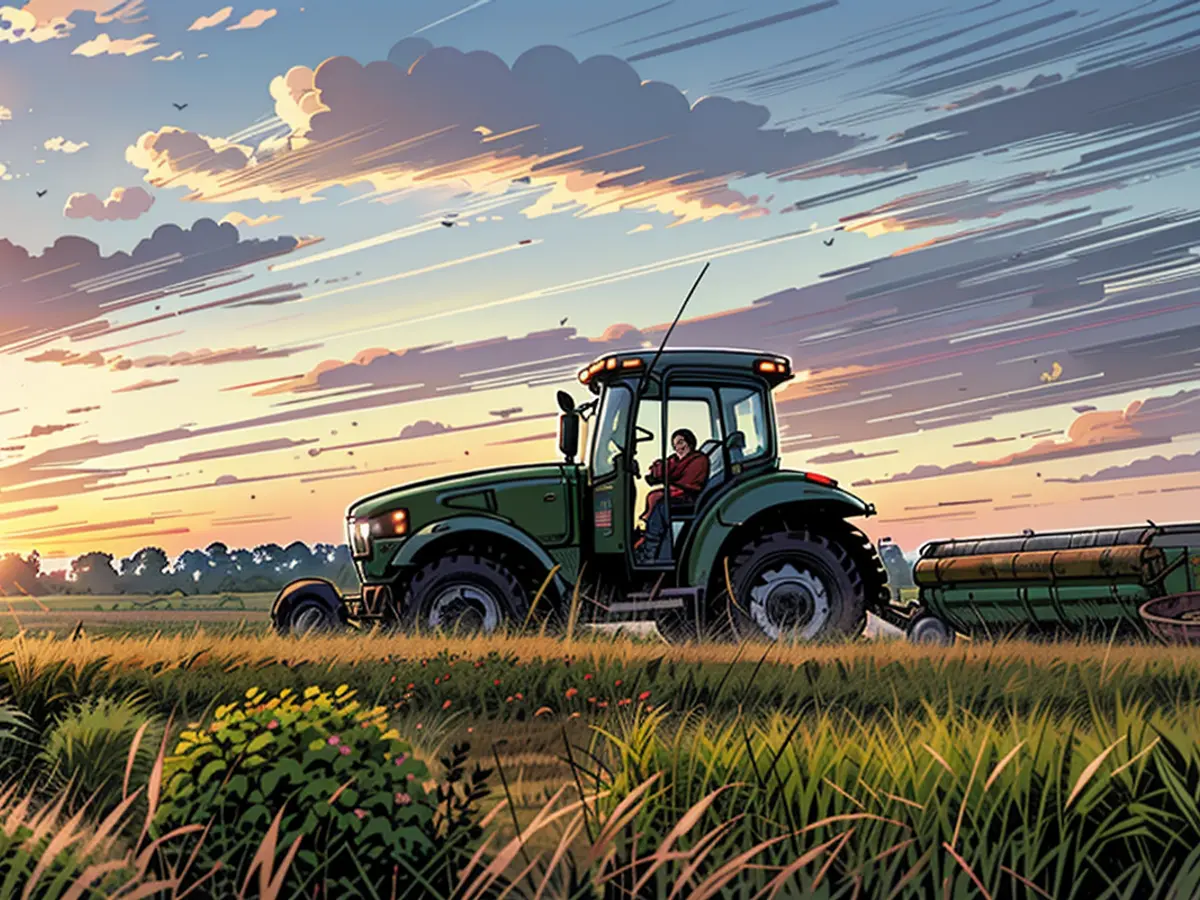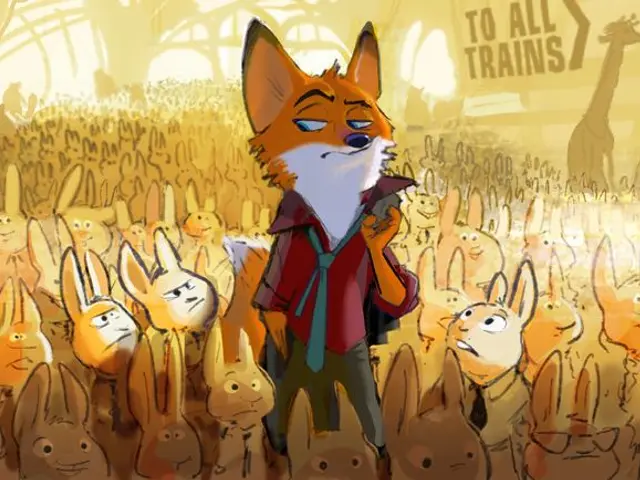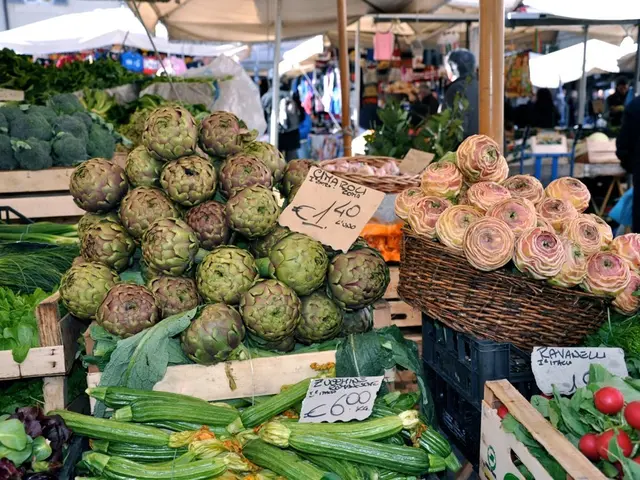Growing Up: The Future of Farming in High-Rise Buildings? 🏢🌱
Shelves stacked high with plants under harsh LED lights don't seem like the most promising environment for thriving greenery, but at Agritechnica in Hanover, they're proving to be quite the contrary. This year, researchers are showcasing the benefits of vertical farming, or as Finn Petersen from the University of Osnabrück calls it, "in-house farming."
Vertical farming allows for an impressive 7.5 kg of sweet potatoes to be harvested per square meter – more than twice that of traditional farming – and the best part? The produces can be harvested all year round. With more than six billion people predicted to live in urban centers by 2050, according to the Federal Information Center for Agriculture (BZL), it seems like vertical farming could be the solution the world is looking for.
Space Savvy Farming 🧐
In a conventional field, you can only manage to harvest 2.5 kg of sweet potatoes per square meter, but with vertical farming, that number skyrockets to 7.5 kg! That's pretty impressive, and not to mention, space-efficient. "Outside on a conventional field, you can produce 2.5 kilograms of sweet potato per square meter, in an in-house farming system we harvest 7.5 kilograms per square meter," Petersen shared.
But wait, there's more! From a BZL perspective, the arable area for agriculture is shrinking, and with climate change causing a steady increase in extreme weather events like heavy rainfall and drought, yields are becoming lower. Vertical farming, with its year-round growth option, could be a lifesaver.
Climate Conscious Farming 🌍
Concerned about the environment? Vertical farming has your back. When it comes to water use, in-house farming systems use only what they need, which results in some serious water-saving opportunities.
According to Petersen, "there is no other system that uses as little water as the vertical farming system. Everything that goes into the environment can be recovered and returned to the water cycle."
Yeah, you heard that right – recycling water, like it's 2050!
But what about energy? Well, it's a high-energy game, admits Mempel, which is why solutions for this area are being sought.
The Real Potential of Vertical Farming 🌱
Tomatoes and peppers might have less potential in European vertical farming due to competition with southern regions, but it's not all doom and gloom. Heike Susanne Mempel from Weihenstephan-Triesdorf University of Applied Sciences remains optimistic. "We will continue to need all cultivation systems, but I am convinced that we will also see the vertical farm much more frequently in our agricultural landscape in the medium term."
With 400,000 visitors expected to be in attendance at Agritechnica, it seems that the future of farming is vertical and tantalizingly close!
Struggling with Limited Arable Land? 🌄
Vertical farming could be the hero you're looking for in urban areas where arable land is scarce. By utilizing a vertical environment, cities can significantly increase their crop yield from 2.5 kg per square meter in traditional farming methods to 7.5 kg per square meter in vertical farms, as Mempel explains.
And here's the cherry on top – with less water usage, a controlled growing environment, and reduced transportation costs, vertical farming is a highly sustainable, economical, and efficient choice for city-dwellers.
Enrichment Data:
Vertical farming is a space-saving and eco-friendly alternative to traditional farming methods, emphasizing water conservation and maximizing crop output in urban environments. Here are the key insights:
Launching Your Vertical Farming Project 🌱
Exploring Potential
To get started with vertical farming, consider the following advantages and disadvantages:
- Space Utilization: Vertical farming effectively utilizes limited space, concentrating crops in a vertical environment, making it a smart option for cities with scarce arable land.
- Year-round production: Vertical farming ensures efficient crop yields throughout the year thanks to indoor climate control and the absence of external weather variables.
- Water conservation: Enhanced water management and a controlled indoor setting enable vertical farms to cut down on water usage significantly compared to traditional farming methods.
- Reduced transportation costs: The close proximity of vertical farms in cities to consumers saves fuel and time due to decreased transportation distances.
- Lower pesticide usage and carbon footprint: Vertical farming reduces the reliance on pesticides and fossil fuels using controlled indoor conditions, making it a cleaner and greener alternative.
Overcoming Vertical Farming Challenges 🔧
While vertical farming has many advantages, certain obstacles must be addressed:
- High energy requirements: Addressing energy requirements and minimizing energy usage is paramount for successful vertical farming.
- Lower potential yields for certain crops: Traditional crops like tomatoes and peppers might fare less well due to the limitations of vertical farming, particularly in European climates.
- Economic feasibility: Competing with standard greenhouse production or regions with favorable climates can make vertical farming cost-prohibitive.
The Future of Food Production 🕰️
As the world population continues to grow, it's critical to explore innovative modalities for food production. From a sustainable and spatial perspective, vertical farming presents a promising solution, revolutionizing the way we think about urban agriculture and contributing to a greener future.
References:
[1] Smit, M.M., Sikma, M.J.W.M., van der Zijs, L.G.W., van Solingen, R.W.G.M., Kok, R., & Matijevic, R. (2019). A review of vertical farming – the energy, water and sustainability challenges. Energy, 172, 1107-1118.
[2] Trewavas, A.M. (2021). Vertical farming: Challenge, potential, and a glimpse towards the future. [Review]. Horticulturae, 11(4), 583.
[3] van Wijngaarden, Y. F. M c, Petersen, F., & van Elzen, G. J. (2020). Energy demand and climate change impacts of vertical farm technologies. Energy Strategy Reviews, 45, 101117.
[4] Thirumavalavan K., Pandian, K. N., Devadass, M. S., & Bastyak, E. M. (2018). Fresh perspectives on the implementation and development of vertical agriculture. International Journal of Environment and Waste Management, 17(12), 2574-2591.
[5] Gupta, V. K., Mahesh, D., & Bhaskar, M. (2019). A review on vertical farming: Concept, design, technology, and performance. Journal of Agricultural Engineering Research, 137(1), 1-13.







